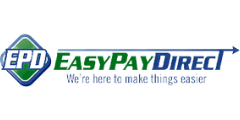summary

5/5
Best for
Merchants in various industries, including e-commerce, restaurants and many types of retailers in need of payment processing services for multiple payment types.
Specializes in
Bank Associates Merchant Services specializes in Level 2 and Level 3 payment processing solutions through its own proprietary software. This company also offers chargeback defense and dispute assistance to help merchants keep their chargebacks as low as possible.
Pricing Summary
Setup Fee: N/A
Monthly Fee: N/A
Swipe Rate: Unknown
Keyed-in Rate: Unknown
Early Termination Fee: $595
Contract Terms:
summary

5/5
Best for
E-commerce companies, SaaS companies, "high-risk businesses", & established small/medium businesses ($500,000+ in annual sales)
Specializes in
Easy Pay Direct has unique gateway software and banking solutions to optimize payments for eCommerce, SaaS, information products, supplements, and CBD amongst other verticals.
Pricing Summary
Setup Fee: $99
Monthly Fee: $24.95
Swipe Rate: 1.59% + $0.17
Keyed-in Rate: 2.39% + $0.29
Early Termination Fee: $0 (domestic accounts)
Contract Terms:
summary

4.8/5
Best for
Small businesses
Specializes in
Online, retail, service industries
Pricing Summary
Setup Fee: $0
Monthly Fee: $20
Swipe Rate: Variable
Keyed-in Rate: Variable
Early Termination Fee: $0
Contract Terms:
Restaurants can have transactions that range from small to large depending on the fare offered.
Although a restaurant can opt to be a ‘cash only’ business, this may deter people from visiting your restaurant or even discourage people from spending freely.
Credit cards are the most popular method of payment and so it would benefit a business to offer it as a method for their patrons.
Working with a payment processor can give a restaurant the ability to accept:
In general, most restaurant businesses are not going to be considered high risk so you will have a wide variety of companies to choose from. While this is an advantage, it can also be overwhelming at first.
By knowing what to look for and what questions to ask, you can choose a payment processor that fits your business.
There are three structures that are the most popular pricing models for payment processors.
They each have advantages and disadvantages.
Interchange fees are set by the card networks and are non-negotiable. Under this pricing model, the processor adds a percentage to each transaction plus a set flat fee.
This model is favorable because it clearly lays out the charges for each transaction (interchange and processing) and provides a highly detailed cost breakdown of payment processing.
This type of billing would allow a business owner to easily compare costs between providers.
A disadvantage, though, might be that this level of detail is difficult to understand or may be overwhelming to process.
As the name suggests, this model of pricing applies a flat rate to every transaction with a nominal charge per transaction, usually less than a dollar.
The advantage of this model is that it is very easy to understand and the cost of payment processing becomes very predictable.
The downside is that interchange fees can vary based on the types of transactions. If a transaction would have qualified for a lower interchange rate, you will miss out on that savings.
This model adds costs based on the characterization of a transaction. The typical designations are qualified, mid-qualified, and non-qualified.
These designations are determined by multiple factors according to each payment processor’s criteria.
Some relate to how the card was processed, in person or another method, because this impacts the risk of the transaction for fraud or chargeback.
All transactions are assigned a category with the rate for processing being reflective of that designation.
This variability may offer some cost savings and yields straightforward statements.
It would unfortunately conceal the true cost of processing as the business owner will not be able to distinguish interchange fees from the processor fees.
These models are some of the most common, but other models do exist.
Discuss all fees and costs with your payment processor so you can understand which structure they use and how you will be charged.
As a business owner, any time you engage in a contract, you should read all of the fine print. Some payment processors require you enter into a contract, whether it be on a monthly basis or some other determined amount of time.
If you do enter into a contract, ask what the termination fee would be if you were to end it prior to the term.
Many processors no longer require a contract so you may feel more comfortable proceeding with a company that offers this option.
In the past, payment processing involved adding a small desktop card reader to your current cash register.
Now, options are limitless for the hardware configurations available to businesses.
Understanding what features your business might want to have or add in the future, might influence which processor you choose if they offer different options.
Some popular pieces of hardware you may want to explore:
These are common options available but each processor will have its own offerings.
Beyond giving the essential ability to process payments, payment processors can provide extra features with software that can benefit your business.
Often these features are highly customized to the restaurant industry, so it is worth taking the extra time to compare the offerings of a few processors.
What was once considered non-essential has become a necessity with the rise of the pandemic.
As more and more customers choose takeout or delivery options, having a system that has the ability to accept orders and payments online will increase revenue options for your business.
Some big-name chains like McDonald’s and Dunkin’ have even pivoted to closing their dining rooms at times and solely offering takeout options.
This helps businesses to stay operational and profitable when they are unable to fully staff their dining room again.
Determine if your restaurant needs the ability to accept online orders or might leave the door open to having it in the future.
The software that powers your payment processing can actually provide your business with powerful data analytics that can help inform your business practices.
For instance, by tracking orders digitally, you can identify which items are most popular.
You may also be able to use your system’s reporting to identify patterns in customer behavior like when you are busiest during the day or year.
By knowing this information, you can adjust your staff schedule and more accurately forecast supply ordering.
You can go as far as using the information to inform any potential marketing efforts such as targeted emails or paid advertisements.
Having the ability to see and monitor your data can also give you insights into any trends over time. You may notice that your average transaction is increasing or decreasing, even if relative sales remain flat.
This would maybe not be apparent without a payment processor’s system analyzing your business’ data.
These features are powerful tools that can help you make decisions regarding your business.
In addition to the above features, many restaurant-friendly systems provide the ability to capture customer data such as name, email, date of birth, etc.
This may allow you to reach back out to past customers to extend them an offer to visit your business again.
You could also create a loyalty program that is managed by your software and will incentivize a patron to frequent your establishment. This is a simple way to increase revenue.
Managing loyalty programs by hand or with punch cards can be tedious and unreliable. By utilizing a payment processor’s software, you can easily manage a loyalty program without investing additional time.
Following the same principle, digitalizing gift cards, both the issuance and redemption, will save you and your staff a lot of time.
Another added benefit is that you will increase your sales as customers can purchase gift cards for friends or family.
Many systems offer the ability to track staff scheduling and actual time worked. This allows you to be able to review past work history or any patterns in absences.
It also helps to alleviate the stress of scheduling by visualizing your staffing capabilities.
Some businesses may already be established with a certain restaurant management system they enjoy and are just looking to add payment processing capabilities.
Many payment processors have the ability to integrate with existing POS systems.
You could also choose to have your payment processing not integrate with your POS but will lose the added values of data management described above.
If you are not bringing any existing system into the mix, you may want to consider your ability to export your data and take it with you if you need to change systems or processors at any time.
Many systems have the ability to quickly turn your data into portable files that can be used to set up another system without sacrificing the data you worked so hard to collect.
Many payment processors will offer a demonstration of their software or hardware to customers. Of course, reading about features is much different than implementing them in practice.
By going through a demo process, you can see the software in action and may notice flaws or shortcomings that weren’t originally obvious to you.
Some payment processors offer these demonstrations of their software right on their websites.
If you’ve identified a payment processor that fits your needs, before moving forward, you need to ask what sort of commitment will be needed in order to implement the system.
A restaurant typically is a fast-paced business environment that does not have a ton of downtime. Look for a company that can provide a quick setup and that requires little to no training to start using.
Some payment processors offer online training to support the implementation of the systems.
Customer service is another important consideration.
Even after the initial setup process, you will want to be able to receive support in case something is not working properly.
Many payment processors offer multiple avenues to reach out for support including telephone, email, and live chat.
Be sure your company offers assistance when you will need it. It will do little to help your business if your payment processing goes down during a dinner rush and your payment processor customer service has already closed at 5 PM.
Some companies go as far as offering 24/7 live support.
Your restaurant may not need that level of support so a processor that isn't always available may not necessarily be a deal-breaker.
Having the ability to accept credit cards as a restaurant gives you an advantage over restaurants that may not offer these payment options.
As a restaurant owner, you need to consider the types of pricing models, contracts, and system hardware components that you want for your business.
Beyond the ability to process payments, you will want to consider what value your processor can bring to your business with the features of the system.
This may include powerful analytical tools and the ability to manage staff scheduling.
Before settling on any payment processor, test drive the system if you are able and ask if it has the capabilities to integrate into any system you may already be using.
Choose a processor that will support you and your business both during the initial setup process and beyond.
Take the time to be well informed and compare offerings between companies. Hopefully investing that extra time will pay off when you find a payment processor that meets your needs and you enjoy a lasting business partnership.
Be sure to check out our top recommendations for the best restaurant credit card processing: